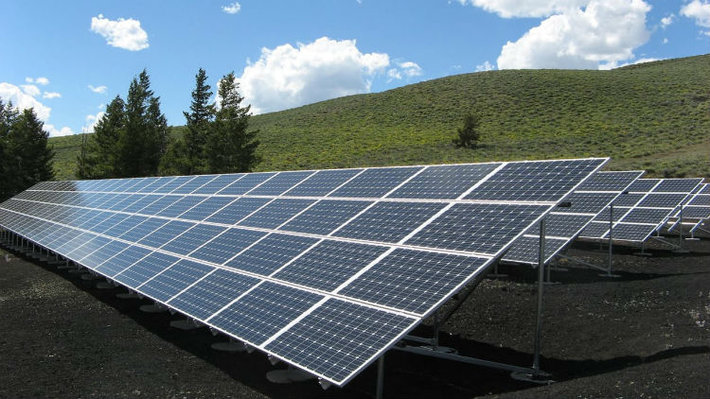Despite our increasing usage of renewable energy, there are still some big hurdles to achieving sustainability. The most recent challenge, which underlines the need for increased investment in renewables, comes in the form of storing renewable energy for later use.
With some forecasts predicting that 80 percent of the United States’ total power generation will come from renewable sources by the year 2050, experts in the energy sector need to act quickly to accommodate the expected growth over the next two or three decades.
The Problem With Modern Energy Storage
Our current energy storage systems have a number of drawbacks. For starters, these devices aren’t able to rely on a steady stream of incoming electricity. Because of the unpredictability of today’s renewable energy sources, including solar, wind and hydro power plants, these storage systems must be able to accommodate large and small loads alike. Moreover, they must be able to distribute this power in an even and consistent fashion regardless of the incoming flow.
The issue of grid parity, which is achieved when the cost of a renewable energy source is equal to or less than that of a non-renewable form, is also holding us back from obtaining optimum energy storage and allocation. With only 20 U.S. states currently reaching grid parity, there’s still a sizeable gap that needs to be overcome.
However, there is some good news regarding grid parity within the United States. According to recent reports, an additional 22 states are forecasted to attain grid parity by 2020. Separate studies indicate the presence of solar panel installations in more than 20 million residential homes within the next few years.
Short- and Long-Term Solutions
While there’s still a lot of work to be done, there have been some short-term measures introduced in lieu of a permanent solution. Large scale battery packs, based on lithium ion technology, are already in use around the globe. While these systems have shown the most potential, the costs associated with such installations, which hover around $1,000 per kilowatt hour, means they’re simply too expensive to provide any substantial benefit.
Compressed air energy storage, or CAES, is also being touted as a viable solution. Similar in design to modern hydroelectric plants, these systems utilize pressurized environments to store compressed air. The stored air is then heated up to provide power to a large turbine which, in turn, operates a power-producing generator.
Again, critics of today’s energy storage mechanisms are quick to point out the inefficiencies in such systems. However, next-gen CAES systems are rather consistent and reliable. For every horsepower of compressed air produced, only seven to eight horsepower of electrical energy is used — depending on the exact hardware used. CAES installations and industrial air compressors are also used in many applications within the manufacturing, agricultural and pharmaceutical industries, too.
Examining the Potential of Cryogenic Storage
Most of us became familiar with the concept of cryogenic storage in the Sci-Fi movies and comic books we enjoyed as kids. While this actually deals with the preservation of usable electricity instead of human bodies, the idea is very much the same.
Thanks to some recent breakthroughs, scientists have found that we can freeze energy via liquid nitrogen or liquid air. A process that works by collecting the heat dissipation that occurs by exposing incoming electricity to extremely low temperatures, cryogenic energy storage is an attractive option on account of its relatively low cost and its smaller physical storage requirements.
Cryogenic energy storage has other benefits and advantages, too. The absence of any toxic or hazardous materials or byproducts, which are common with today’s battery-dependent storage plants, makes the new technology a much cleaner and safer alternative.
A team of engineers has already set their sights on building the world’s largest cryogenic energy storage facility. The new plant, which will boast a capacity of 200 megawatts, will be a welcome addition to the 5-megawatt installation that will be completed in 2017.
Increasing Energy Storage Options Around the Globe
Whether or not cryogenic storage has the potential to become a long-term solution remains to be seen. However, there’s no denying that another storage option brings us one step closer to a 100% renewable world. In that sense, the effective and efficient utilization of cryogenic energy storage can be combined with other mechanisms to take modern energy storage to the next level.

This Women of Green guest blog is by Megan Ray Nichols. Megan writes about many environmental topics including, renewable energy, conservation and sustainability. She invites you to join the discussion on her own blog, Schooled By Science.
Women of Green is TURNING UP THE VOLUME of the feminine voice on the planet in order to create the world we know is possible.

That is really cool that some forecasts predict that 80 percent of the United States power generation will come from renewable sources by the year 2050. I think it would be really nice if we could get energy in more efficient and safer ways. I’m glad that they are planning to work on solutions to our energy storage as well so we will have reliable power. It would be really great if we didn’t have to worry about energy in the far future!
Thanks for your comment Deb! We absolutely agree with you.